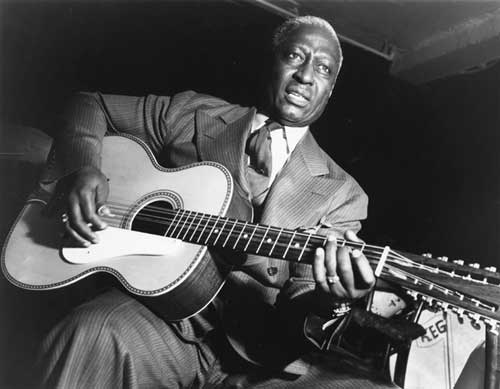
Playin’ tha blues – it aint no big thing and it aint nobodies business if i do!
To play the blues you only have to count to five. Well holy schmoley Batman! That`s one number too darn many fo` some! Right , look out people because today’s post is about as much fun as a mouthful of sand – dry, uncomfortable and nitty-gritty; but just like your monster-in-law its a necessary evil if you want to reap the rewards!!!
The blues is built almost exclusively around I – IV – V

Let’s refresh what we’ve learned so far about scales and chords.
Before you learn how to form certain chords you must first learn about scales.
A scale is a series of notes that play in an ascending and descending manner. For every scale (major or minor) there are 7 notes, for example in the key of C the notes are C – D – E – F – G – A – B.
The 8th note (in this example C) goes back to the root note but an octave higher.
Each note of a scale has a corresponding number from 1 to 7. So for the key of C it will be as follows:
C = 1
D = 2
E = 3
F = 4
G = 5
A = 6
B = 7
In order to make a major triad you will play the 1st + 3rd + 5th notes of a major scale.
In our example it is C – E – G, that’s the C major chord.
Let’s have another example this time using the C minor scale:
C = 1
D = 2
Eb = 3
F = 4
G = 5
Ab = 6
Bb = 7
In order to make a minor triad you will play the 1st + 3rd + 5th notes of a minor scale. In our example it is C – Eb – G, that’s the C minor chord.
Roman Numerals
Sometimes instead of numbers Roman Numerals are used instead. We go back to our example and use a Roman Numeral for each note in the key of C:
C = I
D = ii
E = iii
F = IV
G = V
A = vi
B = vii
Those with a Roman Numeral that is capitalized (I, IV, V) represent notes from which the major chord is built. While those that have lower case numerals (ii, iii, vi) represent notes from which minor chords are built.
The I, IV and V Chord Pattern
For each key there are 3 chords that are played more than others known as “primary chords”. The I – IV – V chords are built from the 1st, 4th and 5th note of a scale.
Let’s take the key of C again as an example, looking at the illustration above, you will notice that note I on the key of C is C, note IV is F and note V is G.
Therefor the I – IV – V chord pattern for the key of C is:
C (note I) = C – E- G (1st + 3rd + 5th note of the C scale)
F (note IV) = F – A – C (1st + 3rd + 5th note of the F scale)
G (note V) = G – B – D (1st + 3rd + 5th note of the G scale)
There are many songs that have been written using the I – IV – V chord pattern, “Home on the Range” is one example. Practice playing the I – IV – V chord pattern for every major key and listen to how it sounds as this might inspire you to come up with a great melody for your song.
Here’s a handy table to guide you.
I – IV – V Chord Pattern
Major Key – Chord Pattern
Key of C C – F – G
Key of D D – G – A
Key of E E – A – B
Key of F F – Bb – C
Key of G G – C – D
Key of A A – D – E
Key of B B – E – F#
Key of Db Db – Gb – Ab
Key of Eb Eb – Ab – Bb
Key of Gb Gb – Cb – Db
Key of Ab Ab – Db – Eb
Key of Bb Bb – Eb – F
